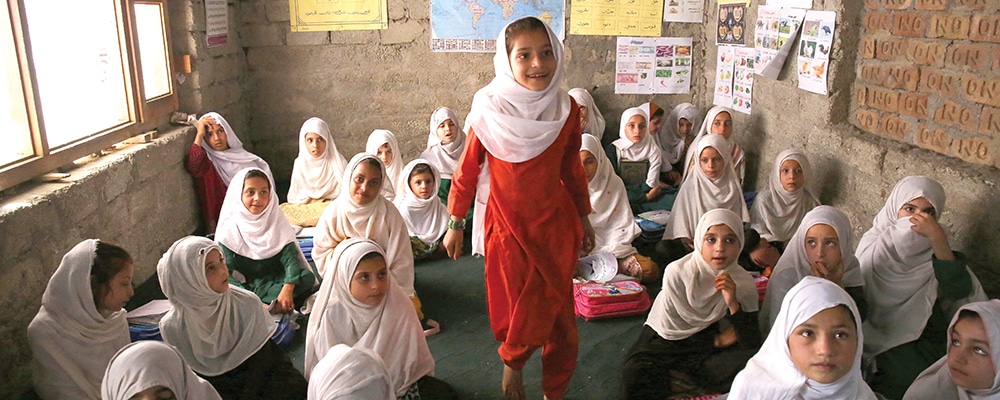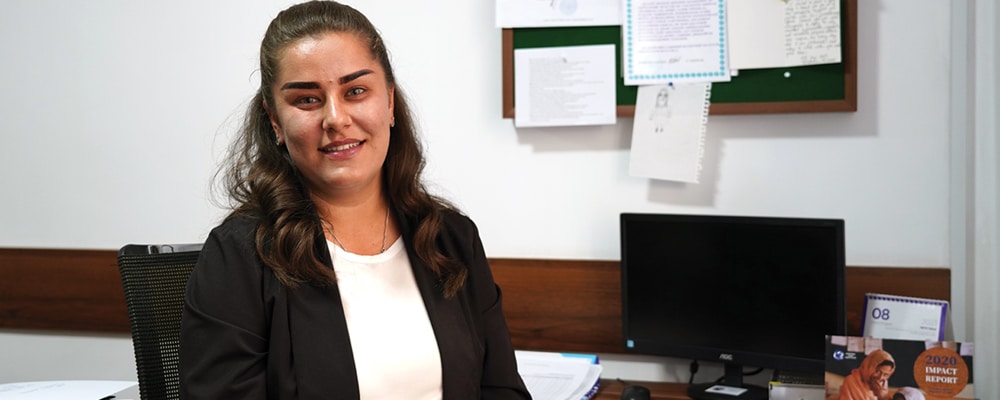Read, Watch, and Listen. Your Central Asia Study Guide.

BOOKS Defiant DreamsBy Sola Mahfouz and Malaina Kapoor, 2023 Mahfouz and Kapoor shed light on the experiences of everyday Afghan girls and women through Sola Mahfouz’s incredible story. Born at the start of the Taliban’s first reign, she was unable to add or subtract at the age of 16. Through sheer will and grit, Sola […]
Other ways to give

Whether you choose to give a direct monetary donation, a gift of stock, or an in-kind gift, CAI appreciates your support. And we’re excited to tell you about a few new, easy ways to donate. Do you work for a matchmaker? Thousands of companies will match donations made by their team members, retirees, and even […]
Tackling the Climate Crisis on the Frontlines

By Nicolas Pavoncelli Over the past year, Central Asia Institute has been working closely with our partners on the ground to understand how the changing climate is impacting the children, families, and communities we serve, and using education to empower them to mobilize and adapt. The year 2023 is already on track to be one […]
A Closer Look at Central Asia Institute’s Impact in Pakistan

By Libby Daghlian Central Asia Institute’s story begins in 1996 in the mountainous region of Gilgit-Baltistan in northern Pakistan. Today, CAI continues to support 42 schools spread out across six districts and situated among soaring peaks. These schools are full of incredible stories, like the students who grew up to be teachers in the schools […]
PROFILE: Mina Sherzoy CAI Board Member

CAI Board member Mina Sherzoy has never been one to shy away from a challenge. From empowering Afghan women to pursuing a career in fashion design to raising two daughters as a single parent, she has no shortage of impressive accomplishments. Growing up in Afghanistan during the late 1960s and 1970s, Mina’s family supported her […]
Scholarship Spotlight on Afsona

By Libby Daghlian For more than 20 years, Central Asia Institute has supported students in Tajikistan with scholarships to continue their higher education studies. Falling under the pillar of accessibility, scholarships bridge a critical gap for Tajikistan’s young adults. While literacy rates in the country are high and many students graduate high school, the choice […]
Early Learning in Pakistan

By Libby Daghlian Nestled in the breathtaking mountains of Pakistan’s Gilgit-Baltistan region, the city of Dain is home to a thoughtful young preschooler named Moheed. Coming from a modest home, Moheed spent the first years of his life close to his mother Zaheera, observing her daily routines and responsibilities, and testing the limits of his […]
Building a bright future

By Libby Daghlian Imagine the start of a perfect school day. You might envision the faces of smiling children waving goodbye to their parents. There might be a bell ringing and open doors to a sturdy and welcoming brick building. Inside, the walls and floors would be smooth and clean, and the temperature would be […]
Tracking Women’s Rights in Afghanistan: A Timeline

Shortly after seizing power on August 15, 2021, the Taliban announced, “We are going to allow women to study and work within our framework. Women are going to be very active in our society.”1 But over the following two years, they failed to deliver on this and numerous other promises. In fact, they proactively instituted […]
Afghans Hold On to Hope and Ask the World to Do the Same

By Molly Shapiro When the United States withdrew from Afghanistan in August 2021 and the Taliban took over, one of the biggest questions was whether women and girls would lose their hard-fought rights—from freedom of movement to education to career opportunities. Tragically, that question was answered quickly, when the Taliban began issuing a rapid succession […]
Pakistan: From CAI Graduate to CAI Teacher

By Shahzadi Imrana Jalil, Moawin Foundation When Ayub was a boy living in Haiderabad, a remote village in the mountainous Gilgit-Baltistan region of Pakistan, he attended a primary school supported by CAI. Back then, the Haideria Central Asia Supporting School had no actual building, no walls, and no washrooms. While it lacked the basic infrastructure […]
Be a Force for Education

By Marianne Monoc Imagine a world in which women and girls have the education and skills to unlock their full potential and contribute to a better, brighter future for themselves—and for their family, community, and country. Central Asia Institute believes in the transformational power of girls’ education to overcome many of society’s greatest challenges, whether […]
